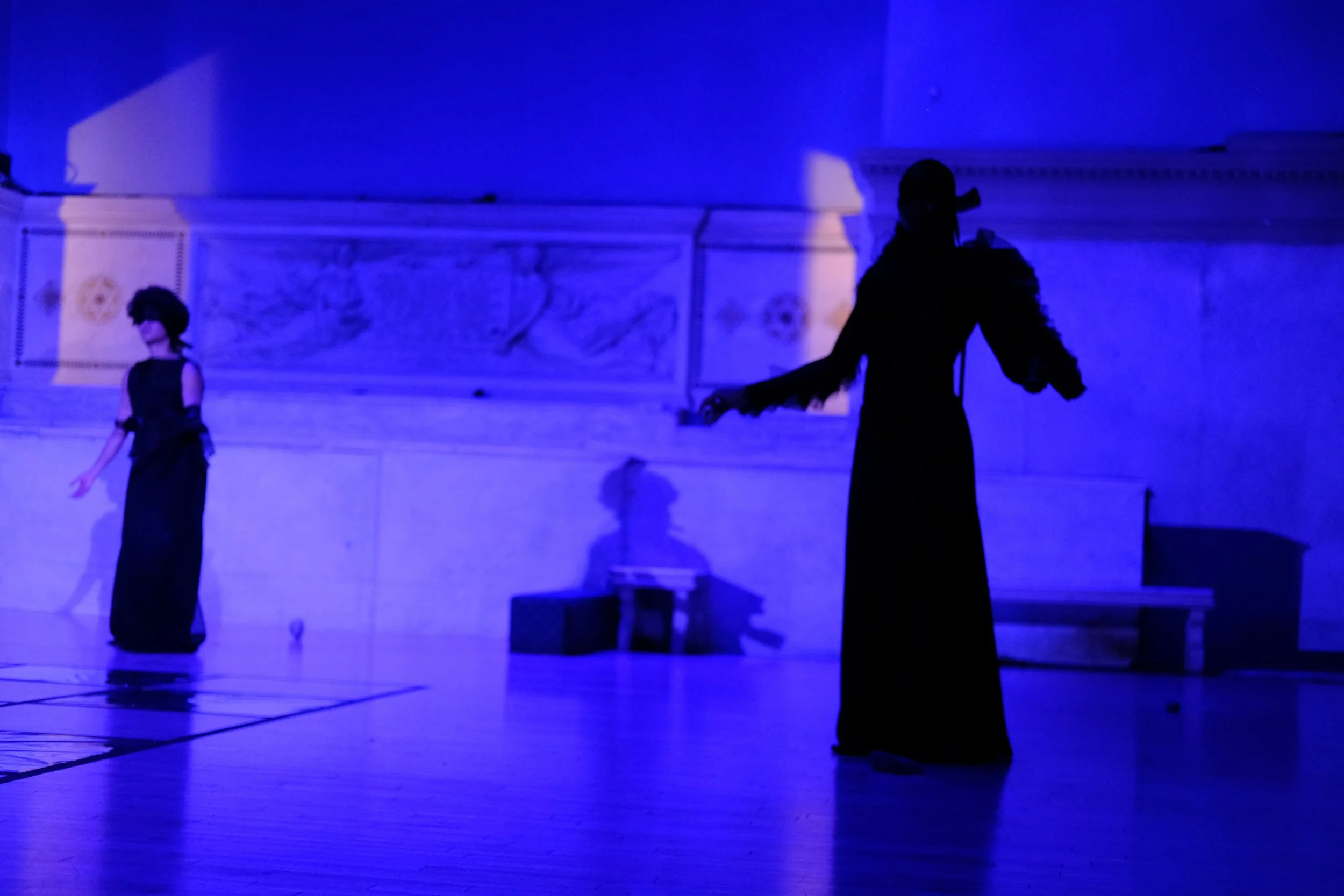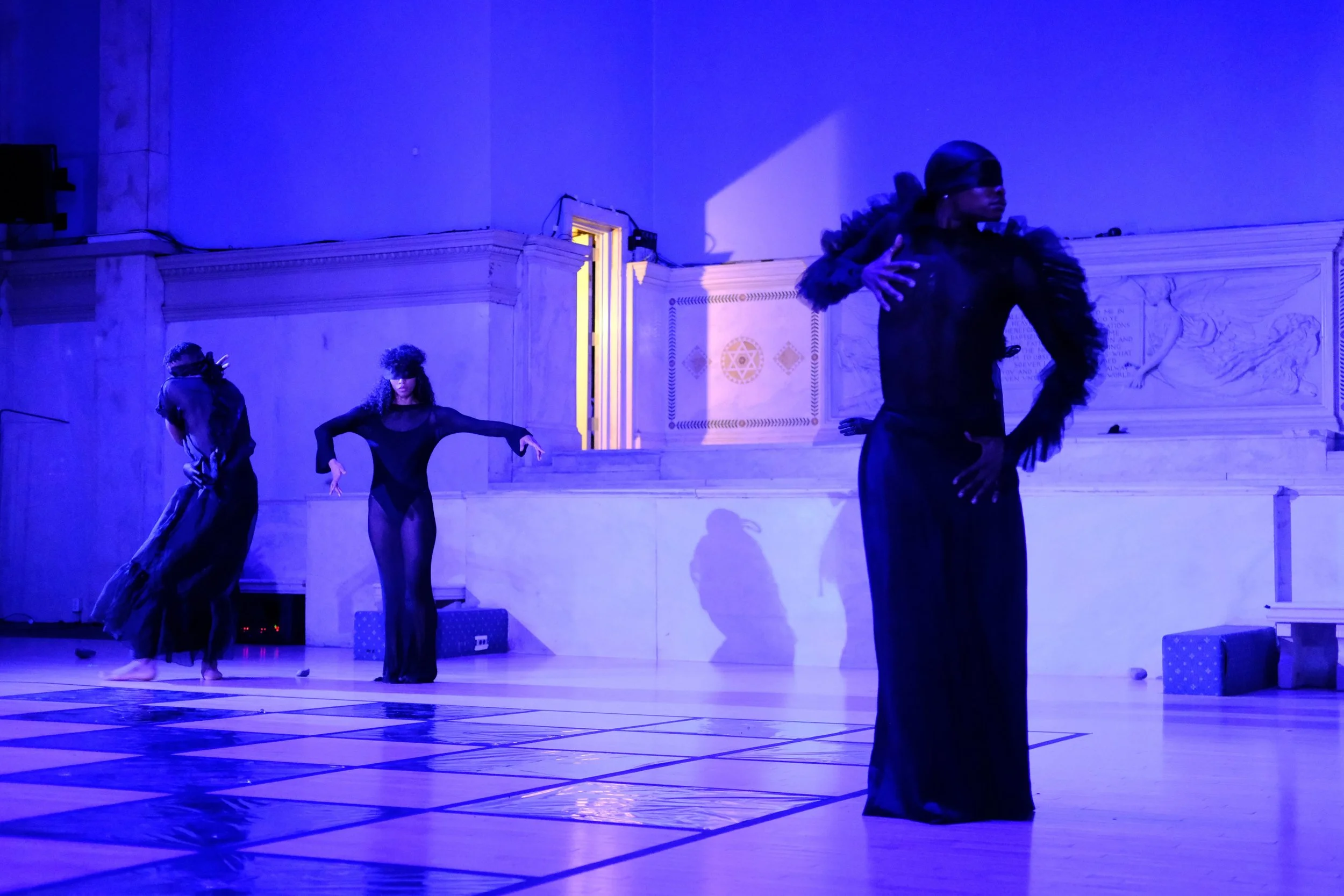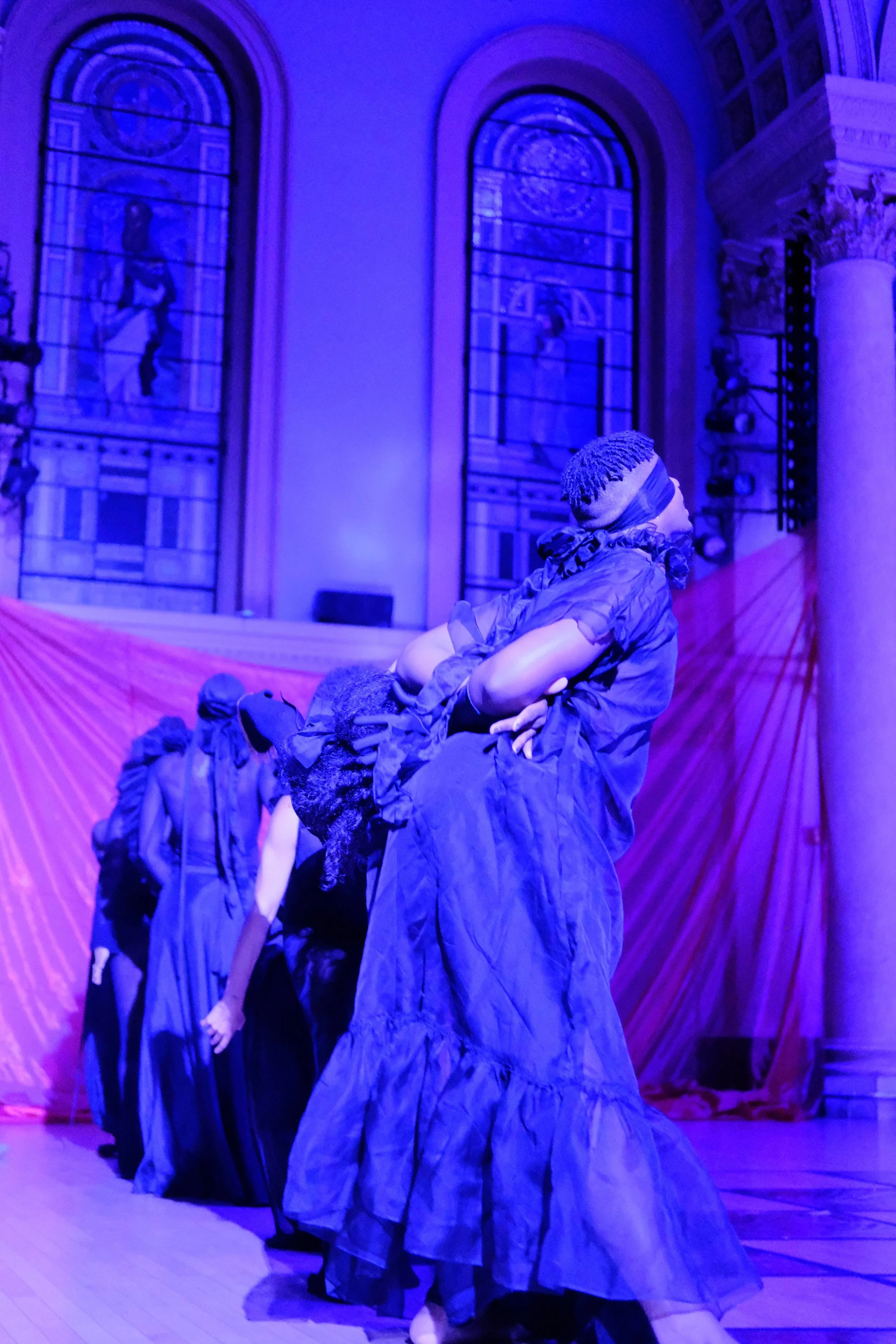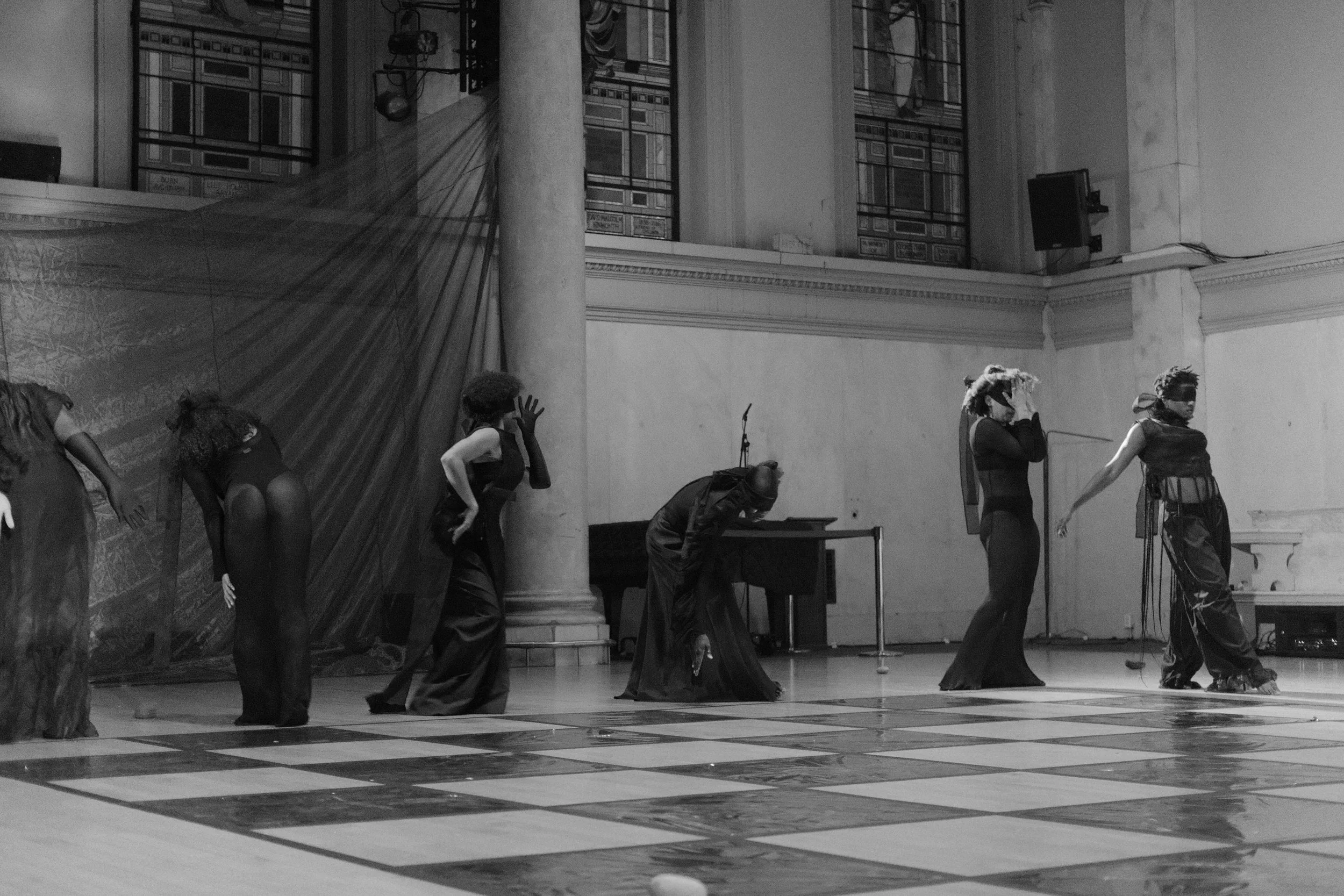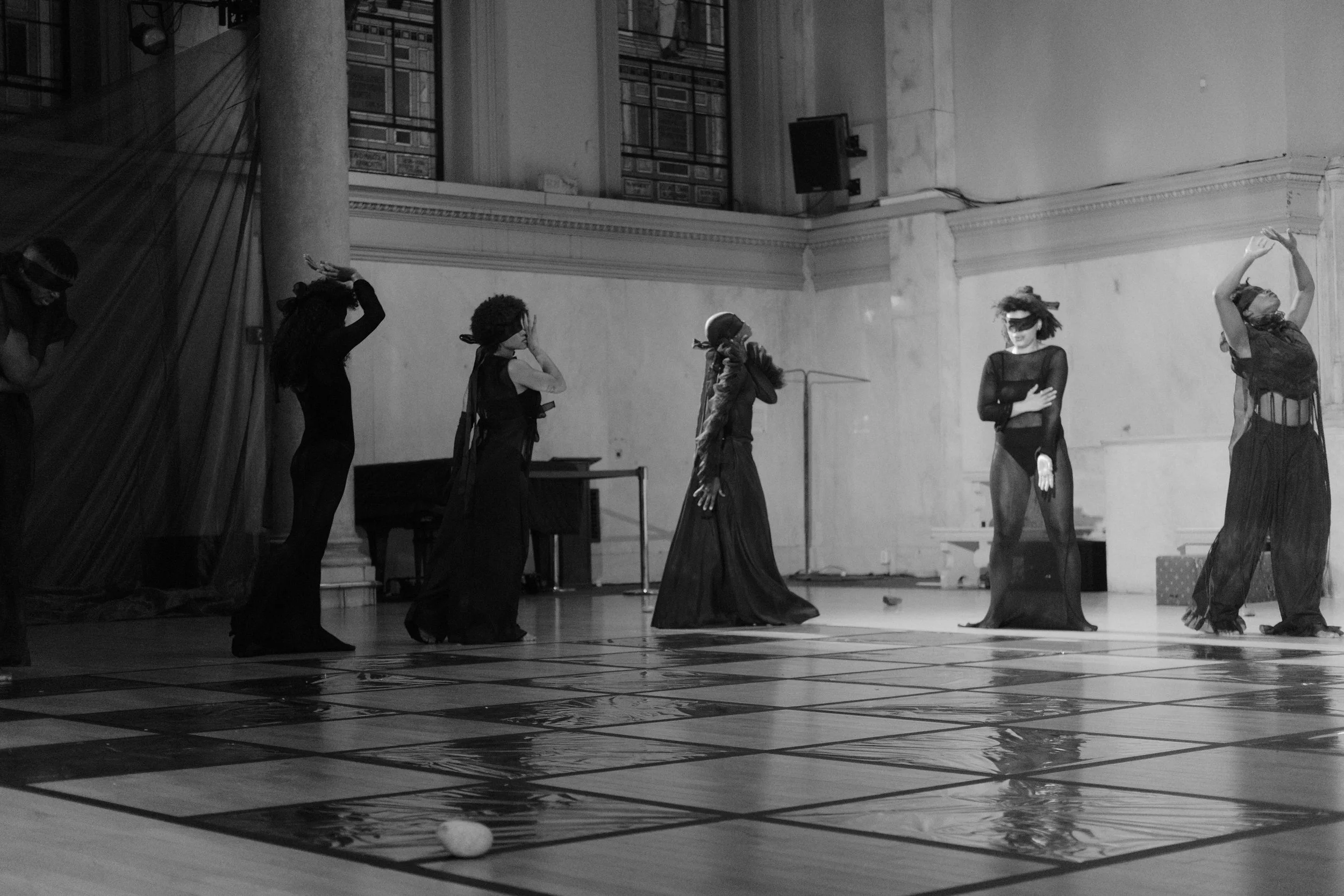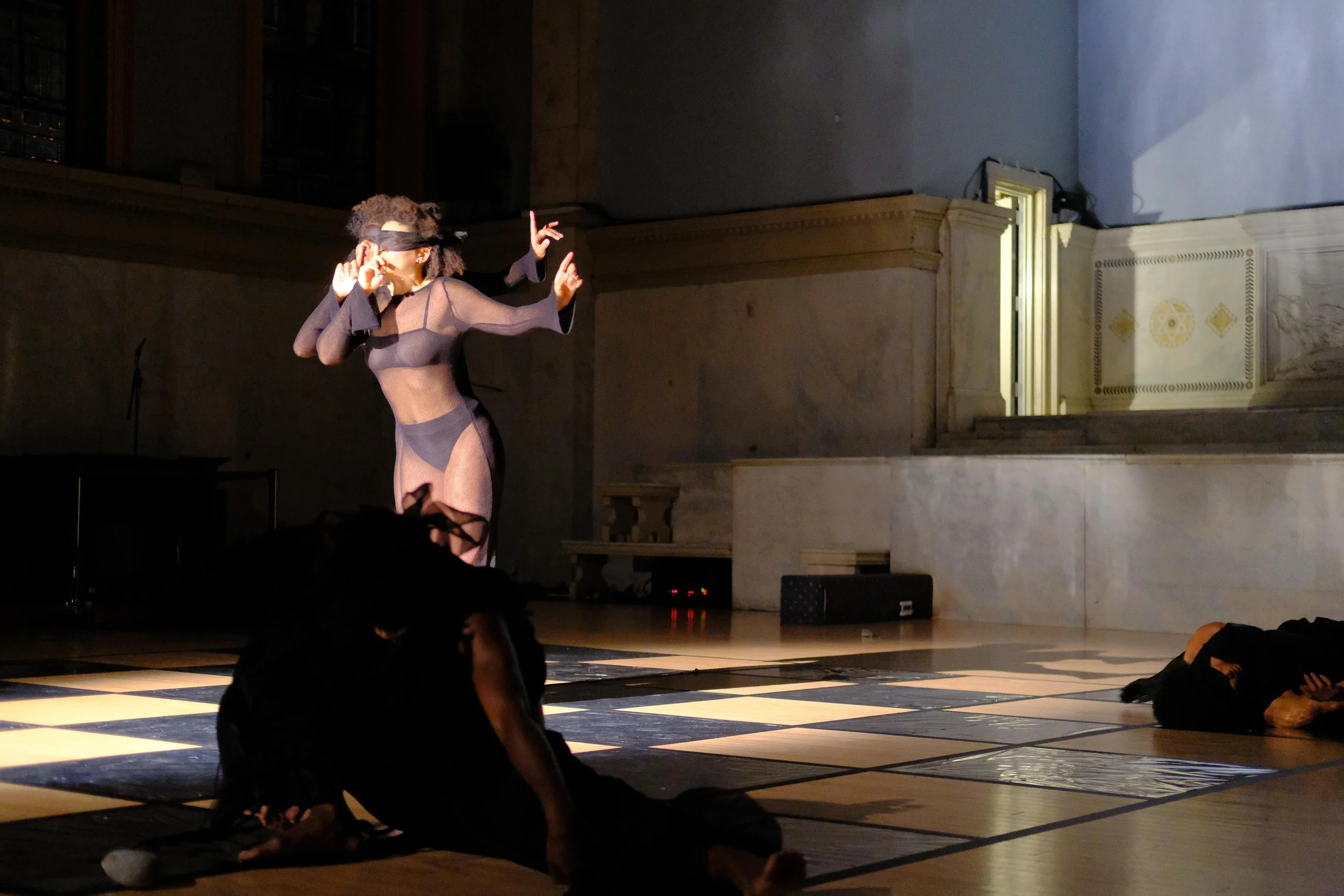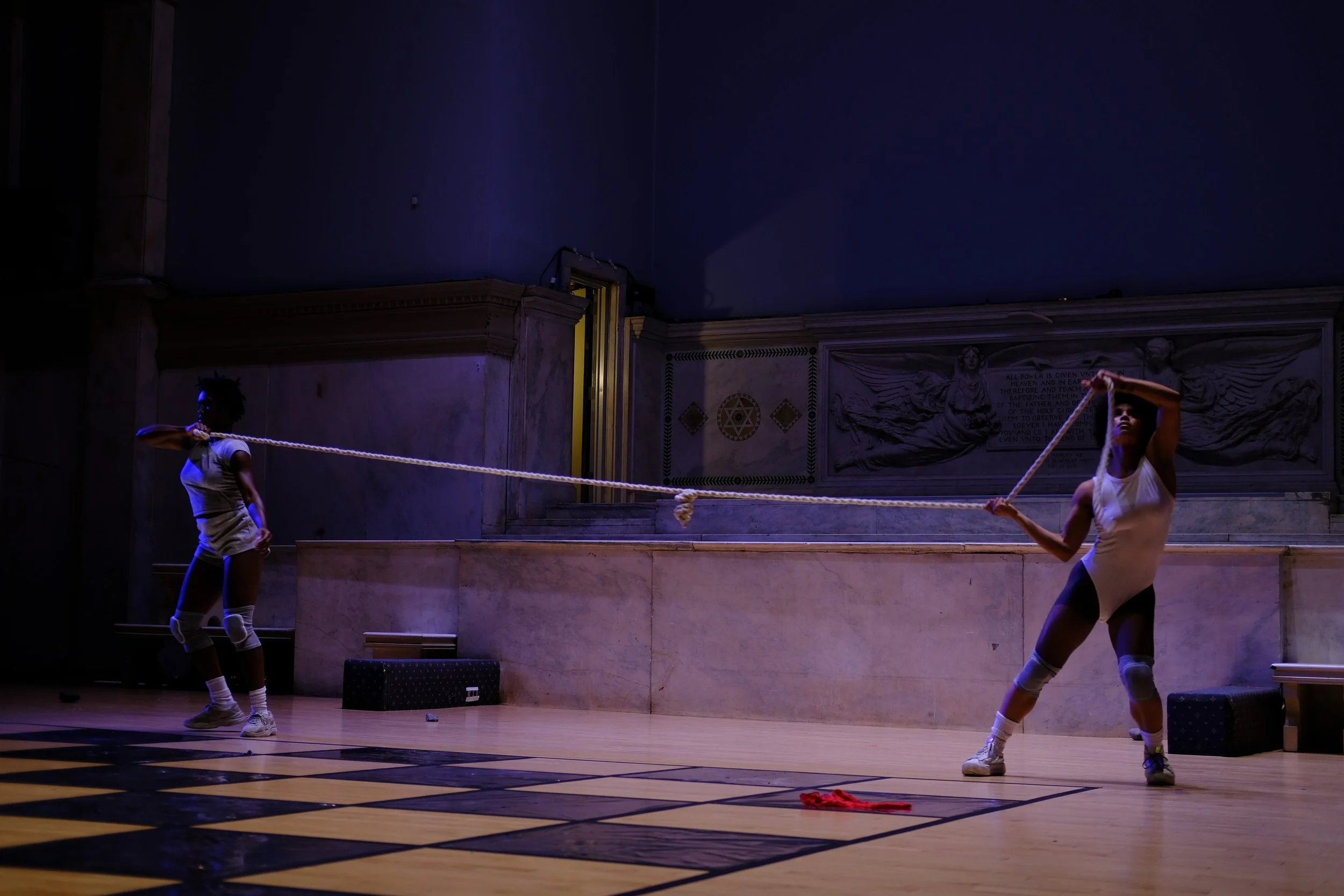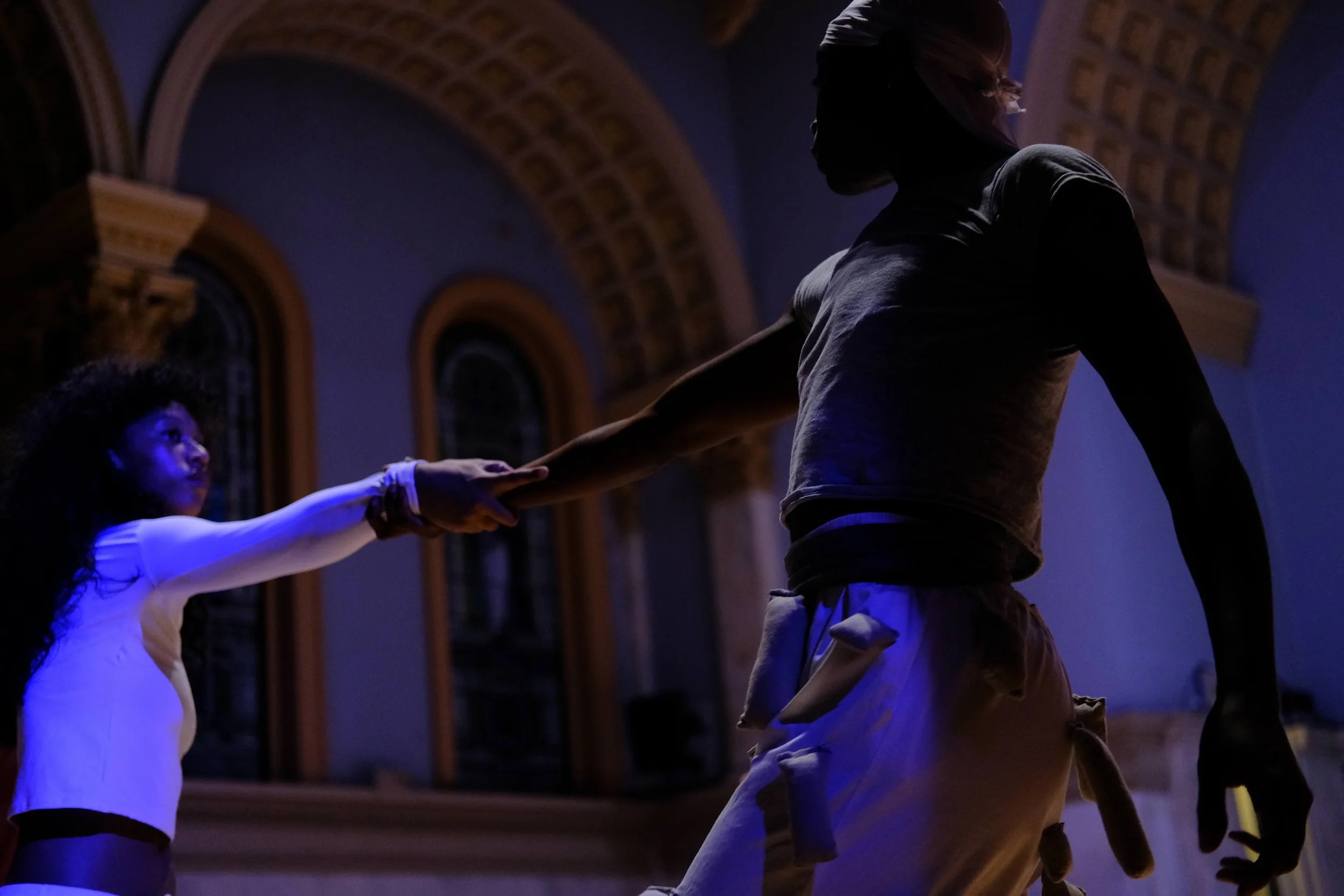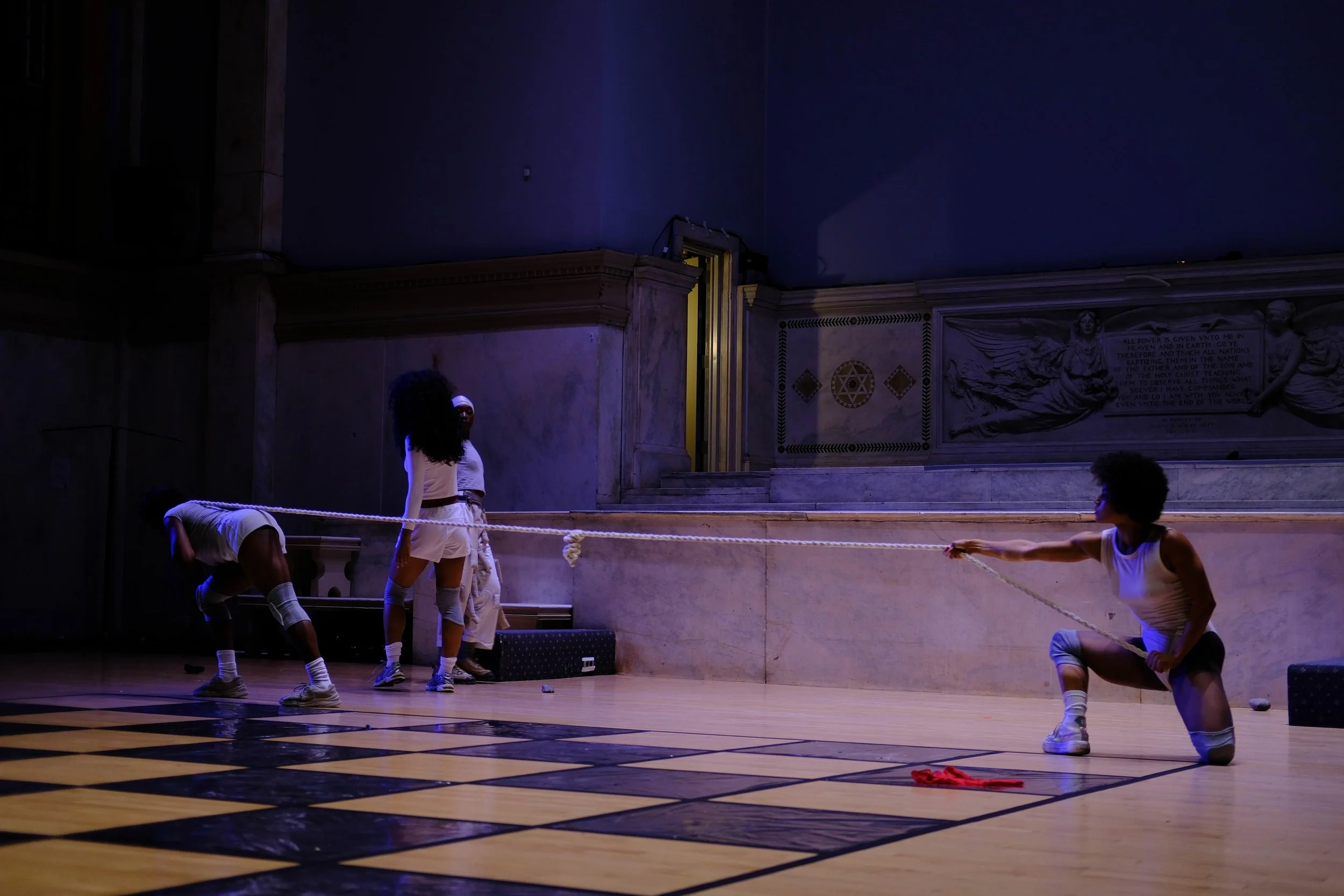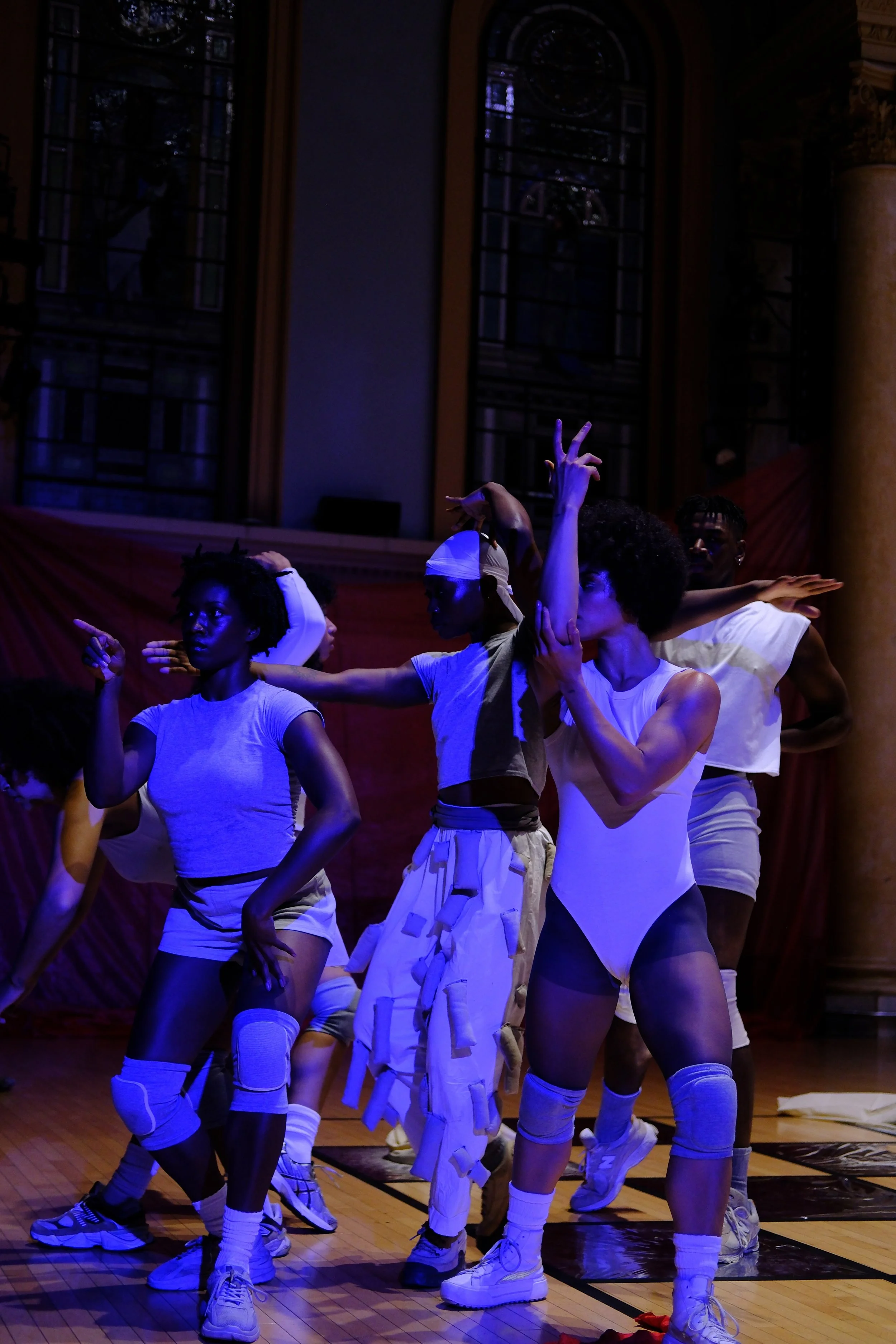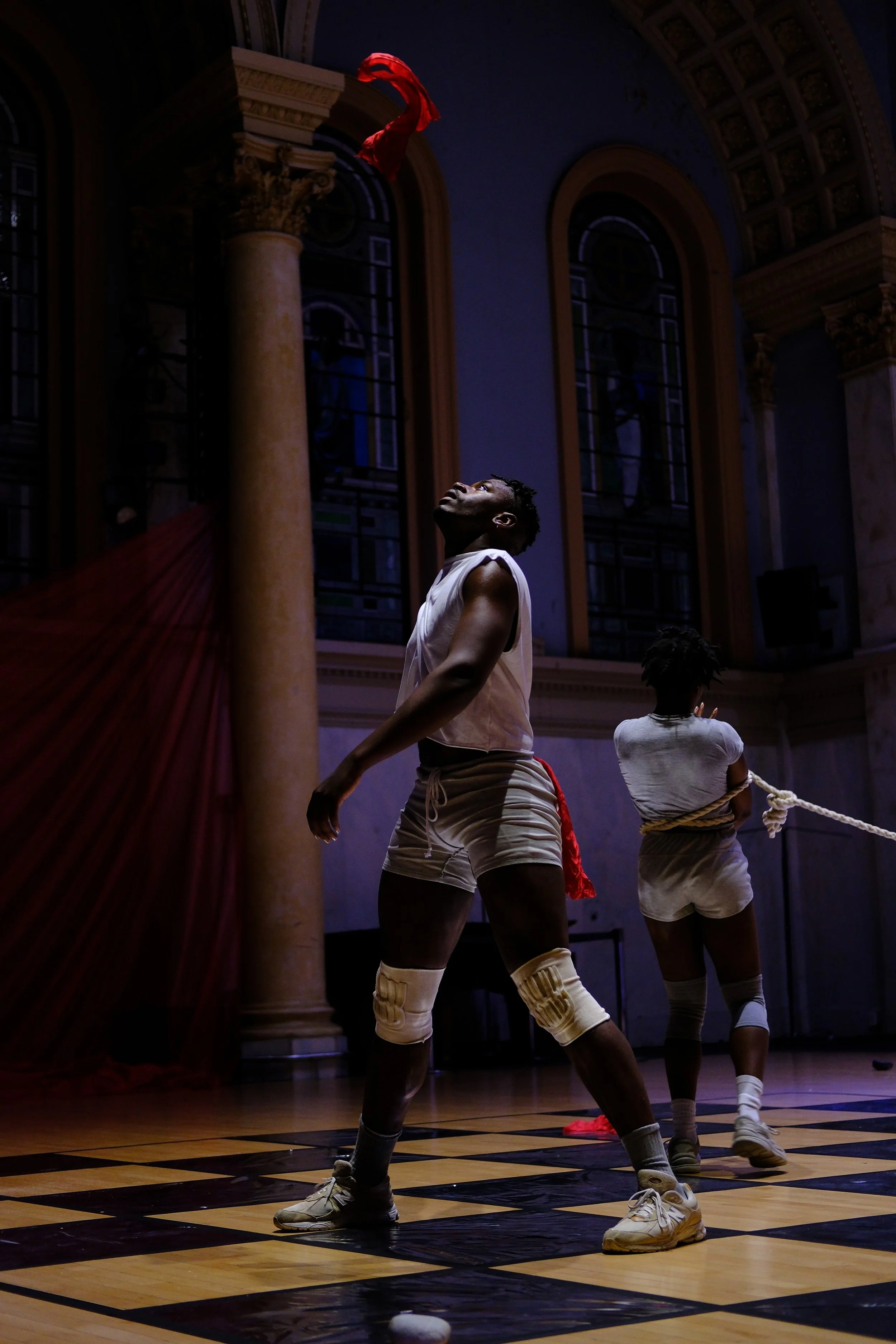Submerged in Spirit With Coco Villa
Coco Villa’s work invites you in with its sense of mystery, abstract nature, and intentionality. A Jamaican-Colombian-American dancer, interdisciplinary artist, and educator, Villa researches the dynamic relationships between body, object and landscape within their expansive practice that takes form in analog photography, dance, costume design, performance, and film. Exploring the self through portraiture and autobiographical narratives, Villa experiments using their body as a medium to explore human intimacy and African diasporic ancestral connections.
On September 10, they presented I Am Swimming with Zaza at Judson Memorial Church as part of its Black Aesthetics series. Curated by Malcolm-x Betts and Arien Wilkerson, this series powerfully centers Black performance work within a historically white avant-garde space. To encounter the piece within this framework was to witness Villa’s personal and ancestral research staged inside another layered history—just steps away from Washington Square Park on NYU’s campus. Judson, a home for postmodern and experimental dance since the 1960s, continues to be a site where artists dismantle conventions and reimagine the body’s possibilities.
Surprisingly, this was only my second time inside Judson, despite being an NYU alum who spent countless hours on campus before and after graduating. The curation of the Black Aesthetics series feels so intentional that it actively invites people like me in—Black and Brown artists and visionaries. I’ve passed the Judson so many times thinking it was just another random building on campus. After all these years, I’ve finally experienced what's behind those doors.
On the day of the performance, the church was full—every seat taken, the balcony packed. I slipped into a spot on the floor in the front row, ready to see how Villa¹ would transform the space. Audience members received a note from Villa detailing an imagined childhood memory of kids playing in the Dominican Republic’s Río Nizao. One child dives after a glowing stone in the river, only to encounter mystical ancestral figures—including Zaza, a mythical figure in Villa’s work—moving beneath the water’s surface. The story ends with the child returning for breath, then diving back in to swim with Zaza—a gesture of crossing into another realm.
Just before the nighttime performance starts, the lights dim and the room falls silent. At the altar, Villa stands with their back to the audience, headphones on, body swaying gently side to side to music only they can hear. A purple-blue light washes over the church’s wooden floors, casting an otherworldly glow. Slowly, Villa sheds an everyday T-shirt and pants, stepping into a long, black sheer dress. The transformation ends with one last gesture—a blindfold tied across their eyes and a rock gripped in each hand. With a decisive clink of stone against stone overhead, the performance begins.
Five other performers enter the space, also dressed in black sheer fabric, blindfolded, and holding rocks. They spin slowly and evenly, their movements deliberate. Suddenly—bang! Two rocks crash onto the wooden floor. The group orbits the room like planets, simultaneously rotating on their own axes. Their bodies breathe loudly, exhaling in forceful sh sounds, filling the room with a rhythm both primal and mechanical. The choreography is minimal yet intense—precisely measured, unwavering. The performers seem like tall towering ancestral guardians, enacting a ritual to guard the space—like open-mouthed gargoyles stationed at the entrance of a temple. The faint sound of water droplets filters into the space. Time loosens. The weight of my long day lifts away. I feel submerged in something dreamlike, trapped inside the subconscious.
At the center of the checkered floor, Villa moves with outstretched arms, shadowed by another performer behind them, repeating each gesture exactly. The figure behind falls somewhere between a double and their shadow self. The performance felt like being underwater, caught between the subconscious and the ocean world. After the performance, Villa elaborates the title of the performance that echoes this sensation. “It is a declaration or statement about being the energy that is in all of us,” they say. “Swimming can be taken literally, and there's that tie. I’m fascinated by water. It's a really powerful element. I question what does it mean to swim in general? And to be fully submerged in something that alters your vision, your hearing, your senses as a whole. I’m stating that I am submerged in the Spirit that's with me.”
The lights dim to near-blackness. Orientation vanishes and the stage is now empty. Acting as a liminal space, the landscape transitions through sound. A disembodied voice emerges through the speakers: “Whatever I repress, manifest. Whatever I repress, manifest. Whatever I repress, manifest.” The mantra folds over itself like an incantation, blurring warning with prophecy.
When the performers return, they no longer don the breezy dresses. This time in athletic gear: knee pads, sneakers, white socks. Their movements shift into tasks and trials, reflecting reality. One performer tosses a red handkerchief into the air, catching it as it drifts down like a feather; their body embodies buoyancy, weightlessness, and play. Another pair, tethered by rope, lean against its pull—less a tug-of-war than a balancing act, each body calibrating the other’s force. A different pair locks into gestures of trust falls, testing surrender and support. Meanwhile, Villa hauls heavy bags of sand, pouring their contents onto the floor.
“This scene is completely about labor and work,” Villa shares. “The idea was for everyone to have different characters. I am imagining myself with the sandbags as time, like an hourglass time. dorchel and Mikaela, who have one rope, are characters of tension. Ny and Benin are exploring weight, giving and receiving weight, carrying weight. And Maleek with the red scarf, is completely embodying fluidity. All of these elements together feel like anchors and elements of work and what we work towards together in transformation.”
Soon, all the bodies shake violently, as if overtaken by unseen currents. From the speakers comes another declaration: “We are star dust. We come from the stars. We are star children!”
A final transformation: The performers reemerge in flowing sheer red fabrics. Together, they stretch a vast length of red cloth across the stage until it covers the entire floor, a tidal wave of color. Red everywhere—blood, fire, cosmos, womb, rebirth, and celebration. Villa ends the performance as a lone figure. However, it's evident that they are not alone and the guardian spirits are dancing along them.
Soon all the performers come out to take a bow. Then, Judson Church resident curator Wilkerson appears with a cake and lit candles, and the room shifts once more—from ritual space to birthday celebration. The audience and performers sang Villa “Happy Birthday,” with everyone’s voices filling the church as one last collective offering. I left the experience feeling as if I had just emerged from a meditation—cleansed, submerged, and fully returned.
¹ Villa directed and choreographed I Am Swimming with Zaza. They also designed the costumes and set. The work featured dancers Benin Gardner, dorchel haqq, Maleek Slade, Mikaela Sinclair Brandon, Ny Opong, and Villa. Artist Akeema-Zane created the sound score, with dramaturgy by Elliot Reed. Garment fabrication assistance came from Marino Funakoshi, and set fabrication from Anne Symons.

